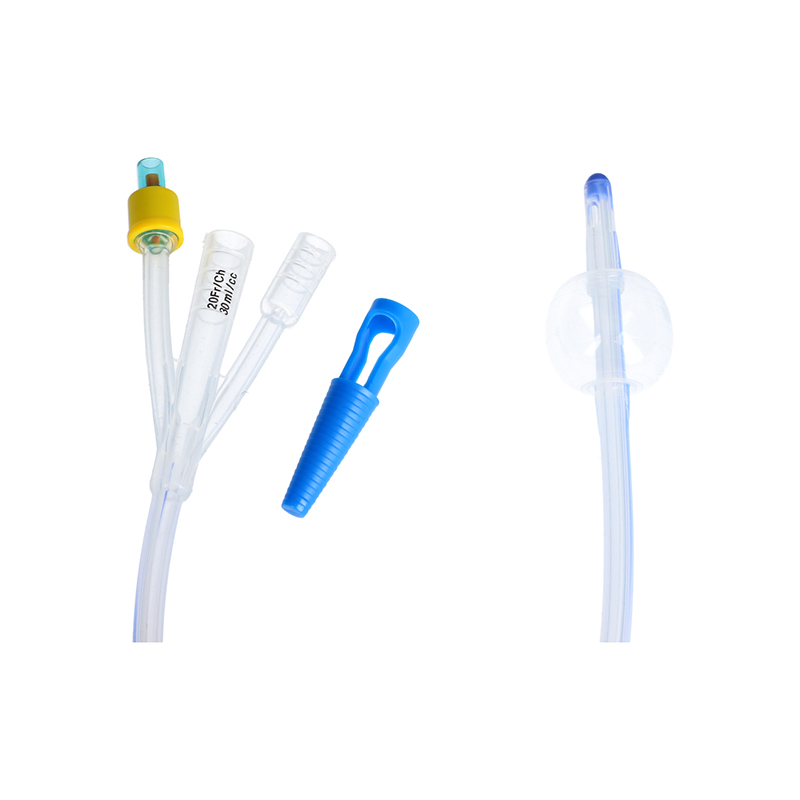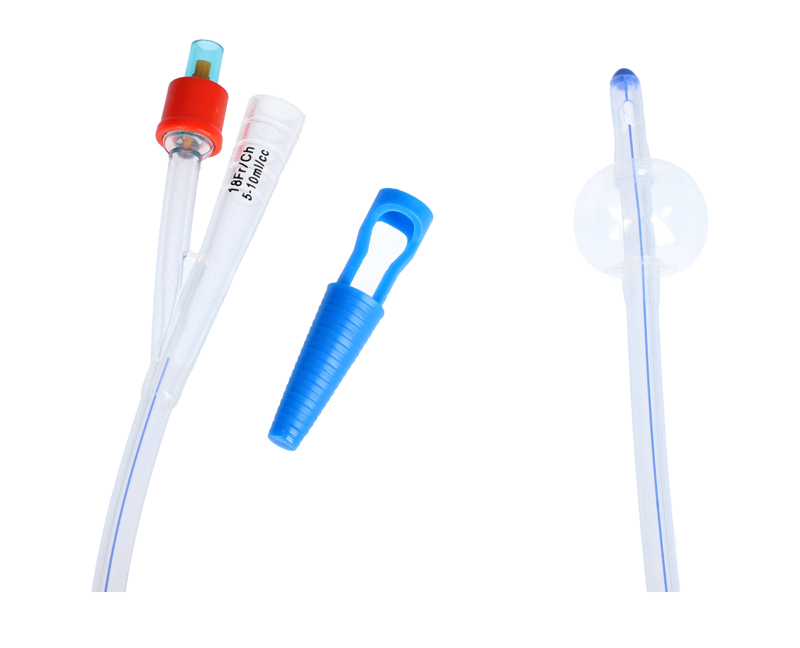
The use of this type of catheter is essential for effective long-term urinary drainage management. Our catheter, made from soft and flexible silicone, is designed to offer comfortable and secure insertion. It features an atraumatic, rounded tip that facilitates placement while reducing the risk of mucosal irritation.
This catheter has a universal urine drainage port compatible with standard urine bag connectors, allowing easy integration in a variety of clinical care settings. A radiopaque line along its entire length ensures straightforward monitoring under X-ray.
CE-certified and manufactured without latex or phthalates, our Foley catheters are ideal for sensitive patients, thereby reducing the risk of allergic reactions. Sterilized with ethylene oxide, they meet the highest hygiene standards. Available in models for both men and women, they provide a comfortable, tailored fit for each patient.
Each catheter is individually packaged in a double sterile pack to maintain sterility until use, in accordance with hospital hygiene requirements.
They are designed to ensure efficient urinary drainage in clinical environments, offering a reliable solution for healthcare professionals.

| Reference | Length | Size CH | Balloon Size | Color | Stock |
| CFNS-3D-16-30-P | 400 mm | CH16 | 30 ml | Orange | Available |
| CFNS-3D-18-30-P | 400 mm | CH18 | 30 ml | Red | Available |
| CFNS-3D-20-30-P | 400 mm | CH20 | 30 ml | Yellow | Available |
| CFNS-3D-22-30-P | 400 mm | CH22 | 30 ml | Purple | Available |
| CFNS-3D-24-30-P | 400 mm | CH24 | 30 ml | Dark Blue | Available |
Request a quote Technical sheet

| Reference | Length | Size CH | Balloon Size | Color | Stock |
| CFNS-2D-06-03-P | 310 mm | CH06 | 3 ml | Pink | Available |
| CFNS-2D-08-05-P | 310 mm | CH08 | 3-5 ml | Black | Available |
| CFNS-2D-10-05-P | 310 mm | CH10 | 3-5 ml | Gray | Available |
| CFNS-2D-12-10-P | 400 mm | CH12 | 5-10 ml | White | Available |
| CFNS-2D-14-10-P | 400 mm | CH14 | 5-10 ml | Green | Available |
| CFNS-2D-16-10-P | 400 mm | CH16 | 5-10 ml | Orange | Available |
| CFNS-2D-18-10-P | 400 mm | CH18 | 5-10 ml | Red | Available |
| CFNS-2D-20-10-P | 400 mm | CH20 | 5-10 ml | Yellow | Available |
| CFNS-2D-22-10-P | 400 mm | CH22 | 5-10 ml | Purple | Available |
| CFNS-2D-24-10-P | 400 mm | CH24 | 5-10 ml | Dark Blue | Available |
The Foley catheter, an indwelling urinary catheter, is specifically designed for prolonged placement in the bladder. It facilitates continuous urine drainage to a collection bag and includes an inflatable balloon that ensures its stability and correct positioning within the bladder.
The insertion of this type of catheter must be performed exclusively by a qualified healthcare professional. The catheter is inserted through the urethra until it reaches the bladder, where a balloon is then inflated to secure its position. This allows uninterrupted urine drainage.
The placement of a urinary catheter is recommended for patients who are unable to urinate on their own, in cases of obstruction, urinary retention, incontinence, or postoperatively. It allows precise monitoring of urine output as part of medical follow-up.
The JJ stent is inserted into the ureter to restore urine flow from the kidneys to the bladder in cases of obstruction or stenosis. The Foley catheter, on the other hand, is a balloon catheter inserted directly into the bladder to ensure temporary or prolonged drainage.
The Pezzer catheter is used for postoperative drainages, notably in cases of cystostomy or intestinal drainage. The Foley catheter is more suitable for temporary or prolonged bladder drainage, especially after surgery or in cases of acute urinary retention.
Yes, the Blakemore tube can be used together with a Foley catheter, particularly for patients requiring multisystem management. For example, during a gastrointestinal hemorrhage requiring the use of a Blakemore tube, the Foley catheter can ensure effective bladder drainage.
For comprehensive management of urological procedures, Medfirst offers other suitable devices. In addition to the Foley catheter, the JJ stent can be used for ureteral obstruction, while the Pezzer catheter offers an alternative for specific postoperative drainages. These devices are part of our complete urology range, designed to meet diverse clinical needs.